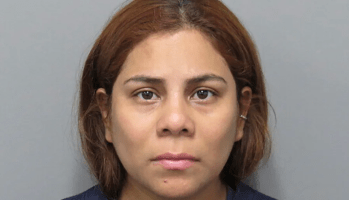CLEVELAND, Ohio — Fred Gray, a member of the Western Reserve University law school class of 1954, has led a life as remarkable as the famous clients he represented — among them the Rev. Dr. Martin Luther King, Jr. and Rosa Parks.
His skin color barred him from attending law school in his home state of Alabama when Gray graduated from college in 1951, but the taxpayers of Alabama — in a policy later deemed illegal — paid for him and other black students to get their degrees out of state.
Gray, who landed at what is now Case Western Reserve University, was willing to go wherever he had to for a law degree that he could use to “destroy everything segregated that I could find.”
He and other black graduates of CWRU became key players in the civil rights movement, dismantling racial barriers. But more than 50 years after he graduated, CWRU and law schools across the country are struggling to diversify their student bodies.
There were six black students in Gray’s law class of 120; today, CWRU has 10 black students among a first-year class of 210.
And law schools nationwide remain overwhelmingly white, according to a new study. Researchers at Columbia University found that law school enrollment of blacks has been stagnant over the past 15 years.
Gray worked his way through law school, with jobs such as delivering dry cleaning. And he was nagged by worries that the Alabama Bar Association would find a way to keep him from getting a law license in that state.
Gray had never attended school with white students before he went to law school, and in his 1995 autobiography, “Bus Ride to Justice,” he remembers sticking close to his fellow black students.
“Despite constant money woes and the small number of African-Americans, Western Reserve was an excellent university from which to receive a legal education,” Gray wrote.
“During my tenure, I never experienced any unpleasantness or any form of discrimination. It proved to be the right background to prepare me to sit for the bar and an outstanding legal career.”
A mentor encouraged him to stay in Cleveland after law school, telling Gray that his opportunities would be better, but the young man never wavered. He was going home to make a difference.
At age 24, just months after finishing law school and passing the bar, Gray opened a law office in Montgomery, Ala., and befriended a black woman named Rosa Parks. The Montgomery bus boycott, sparked by Parks’ refusal to give up her seat to a white person, took place the next year and Gray was a central legal figure in the landmark civil-rights cases that resulted.
He also represented victims in the Tuskegee Syphilis Study, during which unwitting black men were used in a medical experiment.
Still working at age 79, Gray noted during a recent phone interview from his office Alabama, that all of his black classmates at CWRU finished their law degrees and went on to successful careers.
In addition to Gray, other notable Case law alumni included C.B. King, who graduated three years before Gray and went on to represent Ralph Abernathy, Andrew Young and others in important civil-rights cases in Georgia. The federal courthouse in Albany, Ga., is named for C.B. King, who died in 1988.
Both Gray and King represented the Rev. Martin Luther King, Jr. at different times. Edwin Davis, a classmate of Gray’s would go on to become his law partner in Alabama.
“That was a really extraordinary group,” said Jonathan Entin, a CWRU law professor who has known Gray for decades. “They came along at just the right historical moment and were so motivated and so committed.”
CWRU has a proud history of welcoming black students, beginning with the first-ever law class in 1892. Samuel Hansbarry, who was black, was among the first 24 students. Sara Harper, the retired Ohio court of appeals judge from Cleveland, was the first black woman to graduate from what was then the Western Reserve University law school.
Herbert Phipps, a Georgia appeals court judge and 1971 graduate of the law school, was drawn to the school because it was the alma mater of his hero, C.B. King. The late Congresswoman Stephanie Tubbs Jones was another famous alum.
An integrated law school was not unique to CWRU. Others, including the Cleveland-Marshall College of Law at Cleveland State University and some now-defunct schools, also had black students.
Research by Robert Strassfeld, a CWRU law professor, found that there was a surprisingly diverse legal community here in the late 1800s and early 1900s that included many law practices in which white and black attorneys worked together. That racial harmony had waned by the early 1930s, Strassfeld found.
Read full story.
Article courtesy of : cleveland.com
















